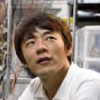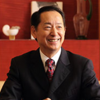
Jury Members

Ingo Günther
(Artist)
I wish that some of the works, proposed or realized, would have taken issue with Emil Cioran's (Romanian philosopher) notion of "time as the ailment of eternity". At any rate, to ask for a 15 second "artwork" for Geo-Cosmos that captures time on the globe, is a bit like asking for a 15 word essay that reveals the secret of life.
Needles to say that the results must consist of more or less interesting and occasionally beautiful failures. They were most enjoyable to watch.

Eiichiro Kokubo
(Astronomer)
This was the first time for me to conduct a screening of movie works, but I enjoyed it a lot and I think it was a good experience. I joined the jury team as an astronomer, so I tried to stay aware of the role I was expected to play during the screening. I examined the works with a focus on the harmony between scientific and artistic aesthetics.

Jeff Mills
(DJ/Techno Producer)
I am very glad to have been invited back and I think it is quite important to continue to create art and design in relation to the Earth. I am very excited about the entries and the contestants.

Koichiro Tsujikawa
(Graphic designer/video artist)
Indeed, With a flat monitor, viewers can receive enough information even in a short time of 15 seconds since we are familiar with the rules concerning movies, including those concerning the editing of shots and changing of scenes.
With a spherical display like the Geo-Cosmos, however, I think 15 seconds is too short since such display is somewhat like an objet d'art and it is tricky to fully utilize the usual concept of editing (for example, it requires viewers to watch movies while also imagining what is on the other side of the display). Many works had fairly good ideas but I found only a few of them were able to fully convey a message in 15 seconds. This could be an issue for the future.
What I liked about the first prize winner was that it was made with photographed images. The time-lapse images shot by the director himself, and other features gave it a hand-made feeling and I thought the work was really nice.

Tota Hasegawa
(Creative Executive Director, Wieden+Kennedy Tokyo)
I joined the screening from the preliminary review and I thought some ideas were very interesting. However, applicants must find a way to deliver their message in 15 seconds as well as the best means to express it on the spherical surface of the Geo-Cosmos. I found that several works came just short of achieving either of these two criteria. I think it is difficult to deliver a story in such a short time unless produced in a strict manner as TV commercials, which are broken down to a few frames in the process of production.
Chief Juror

Mamoru Mohri
(Chief Executive Director, Miraikan)
It was the first year of the 21st century and also the year in which Miraikan opened when I came back from space and created our symbolic exhibition, the Geo-Cosmos. Since my mission in space was to build a 3D topographic map, I was always watching the Earth from there. When I took on the position of Chief Executive Director and came to create a symbolic exhibition for Miraikan, I thought that sharing the appearance of the current Earth would eventually contribute to the purpose of scientific technology. The Geo-Cosmos was first made with LEDs, and it has evolved over the past ten years into the current symbolic exhibition made of high-definition organic ELs.
This contest stemmed from the idea of making contributions to the field of art with the high-resolution Geo-Cosmos by providing artists with opportunities to explore ways of expression with this spherical display. Seen from space, the Earth is a beautiful spherical object; however, this statement merely describes the Earth seen from outside. The contest this year challenged the applicants to think about what approaches they take to “Time on the Globe,” which was the theme of this contest. With his impressively unique idea, Mr. Kawakami expressed on the Geo-Cosmos that the time felt by individuals is actually merely a correlation to the position of the sun. I was personally very happy to see this work and jury members also gave him much credit for the way he described “horizons,” which are difficult to express as a form of space. Mr. Kawakami’s work was remarkable in that he presented a new world view with the Geo-Cosmos. For this reason, we chose this work for the first prize.
The Geo-Cosmos Content Contest 2015 was honored to have many works at even a higher level than last year, and I am glad that I can introduce those works to you now. I would like to express my appreciation for the jury members as well as all the applicants who made this contest possible.
With the awareness that each and every one of us is connected to the world, I would like to maintain and make further efforts together with you to expand the role of scientific technology across the globe and to take steps forward to a peaceful and more prosperous future.


